Traveling With A Group: Navigating Social Dynamics and Autism
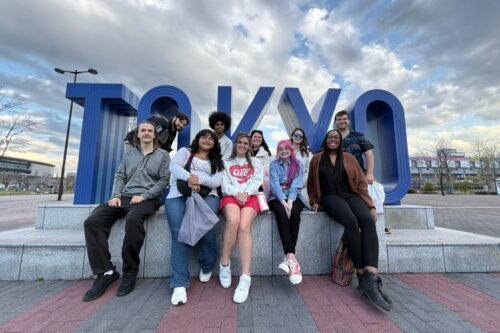 If you want to push yourself and see the world, meet new people, enjoy new experiences, you will inevitably face the problem of how should you manage your autism. I have been a travel adventurer on three big international trips in the past four years: one to Iceland, another to the United Kingdom, and just recently I returned from a two-week trip to Japan (at the height of cherry blossom season, I might add).
If you want to push yourself and see the world, meet new people, enjoy new experiences, you will inevitably face the problem of how should you manage your autism. I have been a travel adventurer on three big international trips in the past four years: one to Iceland, another to the United Kingdom, and just recently I returned from a two-week trip to Japan (at the height of cherry blossom season, I might add).
I had an incredible experience with each trip, and plan to travel again when time and funds allow. While traveling with a group isn’t always easy, I can say with certainty that any difficulties or unease I experienced was well worth it in knowing that I could do it, and was not letting my autism stand in my way of traveling the world.
Interested in becoming a travel adventurer as well? Here are some considerations to help you decide if a long-haul trip is for you.
First, you have to take travel successes on a case-by-case basis, because depending on which travel company you go with, you could be dealing with complete strangers, acquaintances from your work, or somewhere in between, I don’t know what kind of traveling the world experience you want, so you have to decide for yourself. That requires some deep soul-searching on how you would define a successful trip and how willing you are to face aspects of travel that could be more challenging.
I went the complete strangers option for all my trips because I wanted to meet new people (EF Ultimate Break trips are for young adults age 18-35). This obviously leaves a lot to chance, because you don’t know how open minded and accepting your new travel companions are going to be about your neurodiversity. While they may already be familiar with autism by having experiences with their own families or friends or work or whatever, on the other hand they could have no experience with autism at all.
So should you talk about your autism or keep it a secret? It’s a gamble but what’s an adventure without a little risk?
The good news is that young adults who take trips with travel groups are usually open minded and accepting because they’re also on this trip because they want new experiences apart from their typical life and routine. And it is my finding that individuals who are closed-minded or are unaccepting of others’ differences (whether behaviorally, physically, or opinions) don’t typically go on big trips around the world with a group they don’t know.
Traveling With A Group Can Be A Sensory Explosion
From my experiences, the people I traveled with EF Ultimate were very eager to experience the local culture, cuisine, and night-life, my group from Japan especially.
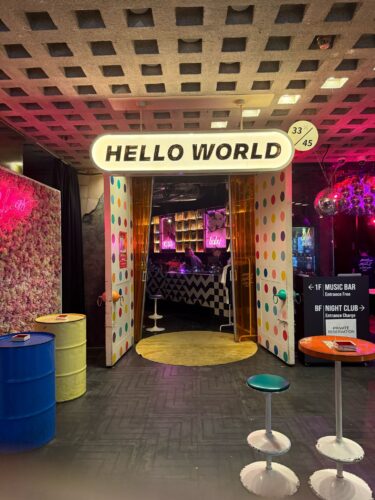 It seemed like almost every day they would go out to local spot after dinner and go dancing and have a good time. I surprised myself more than once, as my sensory experiences were put to the test in these circumstances.
It seemed like almost every day they would go out to local spot after dinner and go dancing and have a good time. I surprised myself more than once, as my sensory experiences were put to the test in these circumstances.
While loud, thumping music isn’t my normal scene, especially when trying to talk in this environment, I found that I was able to do it—at least for a short time. I even attempted karaoke, and if you want to talk about breaking out of your shell and trying something new, getting on stage and trying to sing was definitely it. And while I don’t know if I will ever try it again, I’ll always remember that I had that experience in Japan.
The young adults people from my United Kingdom trip were the same way, but the nightlife in Japan was more fun to experience to because it had more of a techno vibe to it (almost like a retro disco-style scene with lights) vs. darkish, crowded spaces. The groups from both trips were outgoing and entertaining, and whether your beverage of choice was sake, beer, or good ol’ Coca-Cola, people enjoyed one another and celebrated doing something new together .
I’d say the UK had more beautiful scenery, and the Cliffs of Moher will always be an exquisite memory I will cherish. And, surprisingly, the weather was more agreeable in my travels across England, Wales, Ireland, and Scotland, than in Japan. I say “surprisingly” because everyone had prepared me for gloomy, rainy days in the UK, and instead we had warmth and sunshine. And, in Japan, it rained more frequently. And I traveled in the springtime for both trips.
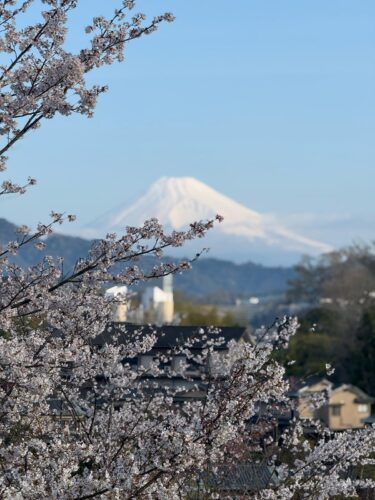 We tried to see Mount Fuji because in Japan it is a must-see place, but when our group took a cable car up to a cliff top to experience the “perfect view of the mountain” on a clear day, it was so foggy that you couldn’t see anything at all.
We tried to see Mount Fuji because in Japan it is a must-see place, but when our group took a cable car up to a cliff top to experience the “perfect view of the mountain” on a clear day, it was so foggy that you couldn’t see anything at all.
And to top it off, it was raining and freezing, so everyone up there was just shivering. I didn’t have that problem in the British Isles.
This is the big problem for everyone wanting to travel around the world, sometimes the weather just doesn’t want to cooperate. But that’s just the risk you have to take because when it pays off and get to see beautiful Mother Nature in all her glory, it will absolutely be worth it and the risk will make you appreciate it more when it does.
And, a side note to my not-so-memorable trip up the cable car was that the next morning, the skies were clear and I could see Mt. Fuji clearly from my hotel room window. So I got to see it clearly in the end, after all!
Other unknown is that when traveling the world, you could meet your future new best friends on this trip, or maybe even a romantic partner or perhaps just a friendly acquaintance. There’s only one way to find out, and that’s to step outside of your comfort zone and try something new. As they say, “nothing ventured, nothing gained.”
How you handle autism when with a solo travel group is your choice. Do you want to be open about it or do you want to keep it secret? The choice to reveal your autism social story (or any other neurodiversity, for that matter) is yours alone, don’t let anyone tell you otherwise.
Traveling with peers can be both exciting and challenging for anyone, but for those on the autism spectrum, group travel dynamics introduce unique considerations. The desire to fit in, socialize naturally, and determine how much effort to invest in social connections creates a complex landscape to navigate.
The Authenticity Dilemma When A Travel Adventurer
For many autistic individuals, social interactions require conscious effort and energy—what some refer to as “masking.” When traveling with a group of same-aged peers, the question often becomes: How much should I mask to fit in, and when can I just be myself?
This isn’t a simple question with a universal answer. Finding the balance between authentic self-expression and meeting social expectations depends on many factors: the specific group, the duration of travel, your energy reserves, and your personal priorities.
Masking, while sometimes necessary for social navigation, comes with documented costs. Research has shown that prolonged masking can lead to exhaustion, increased anxiety, and even identity confusion over time. The mental effort required to constantly monitor and adjust your behavior takes a significant toll on cognitive resources that could otherwise be used for enjoying the travel experience.
Before deciding how much social effort to expend in fitting in, it helps to assess the solo travel group environment:
- Are your peers generally accepting of differences?
- Do they share interests that naturally align with yours?
- Is there space for different interaction styles within the group?
- Are there structured activities that provide built-in conversation topics?
Groups with diverse personalities often create more room for different ways of being social. Look for signs that your differences might actually be appreciated rather than merely tolerated. Observe how the group responds to other forms of neurodiversity or difference—this can be a good indicator of how accepting they might be of autistic traits.
Travel groups often form their own temporary culture with unique norms. Taking time to observe these norms before deciding how much to disclose or how much to mask can help you make more informed decisions about social engagement.
The Spectrum of Visibility
Autism manifests differently in each person, creating varying degrees of visibility:
When autism may be more apparent:
- If you have more noticeable stimming behaviors (hand-flapping, rocking)
- If you experience significant challenges with eye contact
- If your speech patterns or prosody differ noticeably from neurotypical patterns
- If you have difficulty with unwritten social rules and conventions
- If sensory sensitivities lead to visible reactions in certain environments
When autism may be less apparent:
- If you’ve developed effective masking strategies over years
- If your special interests align with socially accepted topics
- If your sensory needs are mild or easily accommodated discreetly
- If your communication style fits within the broader range of what’s considered “typical”
- If you’ve developed scripts and routines for common social situations
The “visibility” of your autism can significantly impact how you approach social situations while traveling. It’s worth noting that this visibility isn’t static—it often changes based on stress levels, sensory environment, and social demands.
The Recognition Factor of the “Autistic Radar”
 Interestingly, other autistic people are often better at recognizing autism in peers than neurotypical individuals. This “autistic radar” creates an interesting dynamic where you might be completely “passing” to most of your travel group while being quite visible to any fellow autistic travelers.
Interestingly, other autistic people are often better at recognizing autism in peers than neurotypical individuals. This “autistic radar” creates an interesting dynamic where you might be completely “passing” to most of your travel group while being quite visible to any fellow autistic travelers.
This phenomenon can sometimes lead to unexpected connections with other neurodivergent individuals in your travel group. While neurotypical travelers might not recognize certain behaviors as autism-related, a fellow autistic person might offer understanding without explicit disclosure.
When traveling with peers, setting concrete social goals can help manage expectations. Rather than aiming for “fitting in perfectly,” consider more specific objectives:
- Contributing to one group conversation each day
- Finding one person with whom you connect more easily
- Taking breaks when needed without feeling guilty
- Sharing an interest or strength that could be valuable to the group
These focused goals can make socializing feel less like an all-or-nothing endeavor. The specificity helps transform vague social anxiety into manageable challenges, allowing you to celebrate small successes rather than feeling overwhelmed by a general sense of “not fitting in.”
Many autistic individuals report that having specific social scripts or goals helps reduce the cognitive load of social interactions. Instead of constantly analyzing every aspect of social dynamics, having predetermined goals allows for more selective focus.
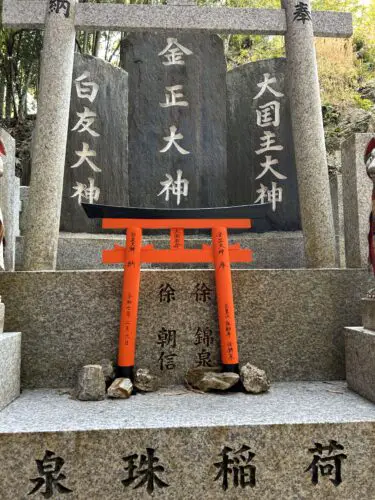 One thing I did this trip that I had not done before was choose to room by myself. On my first trip to Iceland, my older sister Erin accompanied me, and together we had some unique and fun experiences together as siblings. Traveling with her gave me some travel experience and confidence, so that I was able to travel to the UK without knowing anyone.
One thing I did this trip that I had not done before was choose to room by myself. On my first trip to Iceland, my older sister Erin accompanied me, and together we had some unique and fun experiences together as siblings. Traveling with her gave me some travel experience and confidence, so that I was able to travel to the UK without knowing anyone.
On this particular trip with EF Ultimate, I had selected the “roommate” arrangement. While it was okay, there were some hiccups along the way, such as one roommate bowing out of the tour and going his own way, and then navigating the roomie experience of who showers first, and what to do when one is tired and the other isn’t. It was a good learning experience for me, as I hadn’t roomed with someone I did not know before this.
However, in Japan, after learning that the room size in hotels was typically very small (and they weren’t kidding), I saved a little more and was able to pay for private accommodations. For me, it made all the difference in terms of me being able to have a place to retreat when I needed some downtime, and to be able to just plop down on the bed and “chill” while recharging my batteries.
I am able to navigate my time and stay on schedule, and so I didn’t need a roommate to help me be where I needed to be with our very busy itinerary. For someone who is time-challenged or needs reminders, a roommate could be a preferred option. For me, I was able to easily stay on schedule, be where I needed to be, and even venture on my own, and return to each hotel safely.
Here are some considerations before you decide to take that long-haul flight to a new destination and meet up with individuals you have never met.
Disclosure Decisions: A Personal Choice
Whether to disclose your autism is entirely your decision. Consider these approaches based on where you might be on the spectrum:
For those with more noticeable autistic traits:
- Pre-emptive casual disclosure can sometimes reduce social friction. A simple “Just so you know, I’m autistic, so I might need headphones during louder activities” can set expectations.
- Explaining specific needs rather than broadly disclosing can work well: “I do better with some advance notice before plans change” addresses the practical aspect without requiring full disclosure.
- Finding one ally in the group who understands your needs can help bridge social gaps.
For those with less apparent autistic traits:
- Situational disclosure might work well—only mentioning autism when directly relevant to a specific situation.
- Incremental sharing allows you to gauge reactions by sharing smaller aspects of your experience before full disclosure.
- Need-based disclosure focuses on practical accommodations: “I need to take breaks from social activities” rather than explaining why.
Research on autism disclosure in social settings suggests that selective disclosure often yields better outcomes than either complete openness or complete concealment. The key is matching the level of disclosure to the specific context and relationships.
While I didn’t make any grand announcement about my being autistic, the diagnosis came up in some conversations because I talked about how I am a blogger and creator of my website, MyAutismMind.com. I felt comfortable enough to talk about it, and it was refreshing to hear how many people reacted favorably to it, and never treated me any differently once they know.
The Power of Scheduled Downtime
One strategy that works well for many autistic travelers is proactively building downtime into their schedule. This isn’t avoidance—it’s strategic energy management.
 Consider telling your travel companions something like: “I really enjoy hanging out with everyone, but I need some alone time each day to recharge. I’ll join you after I take a short break.” This sets expectations and gives you the space to decompress.
Consider telling your travel companions something like: “I really enjoy hanging out with everyone, but I need some alone time each day to recharge. I’ll join you after I take a short break.” This sets expectations and gives you the space to decompress.
Sensory regulation is crucial for autistic individuals, especially in unfamiliar environments. Travel introduces numerous novel sensory experiences that can be both exciting and overwhelming. Having regular access to sensory-friendly spaces can make the difference between enjoyable travel and sensory overload. One experience I was able to have in Hakone was using an onsen (traditional hot springs/bathing facility). Talk about absolute relaxation!
Many autistic travelers report that having a private space to retreat (like me with my own room)—even if just for short periods—allows them to participate more fully in group activities because they know they’ll have time to recover afterward.
In any group, different people naturally take on different roles. Instead of trying to be the life of the party if that’s not your strength, consider what you naturally bring to the group:
- Are you good at planning and organizing?
- Do you notice details others miss?
- Can you solve problems creatively?
- Do you have specialized knowledge about your destination?
Contributing in ways that align with your strengths often leads to more authentic connections than trying to force traditional socializing. Many autistic individuals excel at specific skills that can be valuable during travel—from remembering complex transportation schedules to spotting interesting details others might miss.
The concept of “autistic hyperfocus” can be particularly valuable in travel contexts. Your ability to deeply focus on a specific area of interest might make you the go-to person for certain aspects of the trip, creating natural opportunities for social connection through your strengths.
Practical Tips Across the Spectrum
For those with higher support needs:
- Bring comfort items that help with sensory regulation (noise-canceling headphones, fidget toys, comfort objects). Previously, I brought earbuds because they were more compact, but I always found them uncomfortable. For Japan, I brought traditional, over-the-ear headphones that I used on the plane and during longer travel between destinations, and for me, it was totally the right choice.
- Plan routes that include quiet spaces for breaks
- Consider sharing a brief “user manual” with key travel companions: “Here’s what helps me when I’m feeling overwhelmed…”
- Use technology to support communication when verbal communication becomes difficult
- Establish clear signals with trusted companions when you need assistance
For those with lower support needs:
- Build in recovery time after social activities
- Prepare scripts for common social situations
- Practice strategic disclosure phrases that feel comfortable
- Identify your social strengths and lean into them
- Recognize when masking is becoming exhausting and plan appropriate breaks
These practical strategies acknowledge that autism exists on a spectrum, and what works for one person may not work for another. The key is identifying your specific profile of strengths and challenges and developing strategies that address your particular needs.
When Effort Becomes Too Much With A Solo Travel Group
There’s an important distinction between productive social effort and harmful masking. Signs that you might be pushing yourself too hard include:
- Feeling constantly exhausted
- Increased anxiety or meltdown risk
- Losing track of your own needs and preferences
- Physical symptoms like headaches or digestive issues
 Remember that genuine connection rarely comes from completely hiding who you are. Most meaningful friendships develop when people recognize and appreciate each other’s authentic selves.
Remember that genuine connection rarely comes from completely hiding who you are. Most meaningful friendships develop when people recognize and appreciate each other’s authentic selves.
Research on autistic burnout—a state of physical and mental exhaustion that can result from prolonged masking—highlights the importance of recognizing your limits. Pushing beyond these limits doesn’t just affect your immediate experience but can have longer-term consequences on your overall wellbeing.
Sometimes, directly addressing your social differences can create unexpected connections. A simple explanation like, “I sometimes need extra time to process before responding in conversations” or “Large groups can be overwhelming for me, but I really enjoy one-on-one chats” can help peers understand your interaction style.
Many people appreciate this kind of straightforward communication and respond with accommodations or insights about their own social preferences. This approach often works because it focuses on specific behaviors rather than broad labels, making it easier for others to understand and adapt.
Clear communication about needs and preferences isn’t unique to autism—it’s a valuable skill for anyone in group settings. By modeling this kind of communication, you might actually help others in the group express their own needs more effectively.
Leveraging Autistic Strengths in Group Travel
Many autistic traits can be significant assets during travel:
- Attention to detail can make you an excellent navigator
- Special interests related to your destination can make you a valuable knowledge resource
- Pattern recognition can help with transportation systems and schedules
- Preference for routine can help establish helpful group rhythms
- Logical thinking can solve unexpected problems that arise
These strengths can create natural opportunities for positive social interactions where your autistic traits become advantages rather than barriers. When your unique perspectives and abilities help enhance the group experience, social connections often develop more naturally.
The Freedom of Temporary Communities
One underappreciated aspect of travel groups is their temporary nature. Unlike permanent social circles, travel groups have a defined endpoint. This can provide a unique opportunity to experiment with different social approaches with lower stakes.
If a social interaction doesn’t go as planned, tomorrow brings new opportunities with the same people in different contexts, or potentially with entirely new people at your next destination.
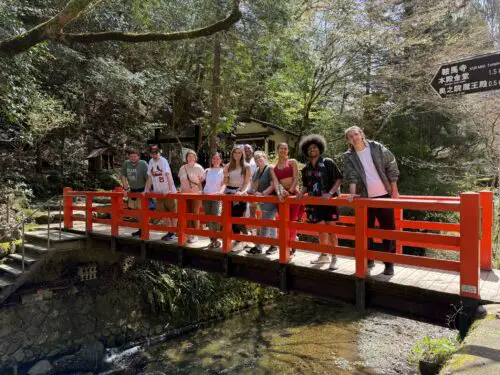 This temporary nature can be liberating—allowing you to practice social skills, try different levels of disclosure, and find what works best for you without the same level of long-term social consequences that might exist in more permanent communities.
This temporary nature can be liberating—allowing you to practice social skills, try different levels of disclosure, and find what works best for you without the same level of long-term social consequences that might exist in more permanent communities.
Rather than thinking about disclosure as binary (tell everyone or tell no one), consider a spectrum of authenticity that might include:
- Being completely open about being autistic
- Disclosing to select individuals who need to know
- Explaining specific needs without the autism label
- Being authentic about preferences without explaining why
- Choosing when to mask and when to unmask strategically
This nuanced approach recognizes that authenticity isn’t all-or-nothing. Finding the right balance for each situation allows you to protect your energy while still engaging meaningfully with your travel companions.
The question of how hard to try when socializing with peers while traveling doesn’t have a one-size-fits-all answer. The most sustainable approach often involves a blend of:
- Authentic self-expression
- Strategic social energy management
- Clear communication about your needs
- Appreciation for what you naturally bring to the group
The most rewarding travel experiences often come not from perfectly fitting in, but from finding genuine points of connection while honoring your own needs and boundaries. When peers see and appreciate your authentic self—differences and all—that’s when true acceptance becomes possible.
Remember that the goal isn’t necessarily to become indistinguishable from neurotypical travelers, but to find a comfortable way to engage that honors both your needs and the shared experience of the group. With thoughtful preparation, clear communication, and self-compassion, group travel can be not just manageable but genuinely rewarding for autistic individuals across the spectrum.
For me personally, these trips have brought me a new level of independence and a stronger belief in my abilities to navigate the unknown, even in stressful situations. Preparation and calmness are key, and I proved I could do both on this latest trip, when I thought my wallet had been stolen.
When I reached for it while headed to a free outing (no ticket required) at the world-famous Bamboo Forest to meet up with others and reached for my pocket and realized my wallet wasn’t on me, my initial reaction was sheer panic. I’ll admit it. But, then, I remembered I had placed an Air Tag into it (my backpack and carry-on also had one), and looked for the location on my phone, which I did have on me.
My initial panic was quickly replaced by calmness, when I could see that my wallet was safely in my hotel room. While slightly irritated with myself that I had forgotten that I deliberately left it back in the room because I didn’t need it just took a quick trip back to my room to confirm it was there safely, and then I was able to return to what I was doing. Problem solved!
My Personal Tried-and-True Travel Tips
- Buy clothing with zippers so you don’t have to worry about things falling out of your pocket or getting pickpocketed. I made sure every item of apparel I brought with me had a pocket that zipped up, and it made the adventure less stressful.
- Put air tags in personal belongings along with your wallet or purse and be sure you know how to track them on your phone. If nothing else, knowing the location of your valuables brings a great peace of mind knowing that you have items. If possible, I’d also recommend putting an air tag in your passport holder as well.
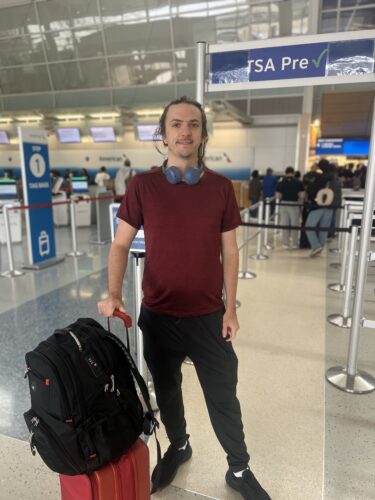
- Bring travel-size hand sanitizer bottles. I was able to tuck several into my liquids baggie, and they came in handy. Let’s face it, often times travel sites are heavily trafficked, and being able to use some sanitizer on your hands from all the touching of stair rails and handle bars brings a greater piece of mind for those individuals (like me) who may be slightly germophobic. Even better, there are often places where you can refill your sanitizer bottle (i.e., in the hotel).
- Try to limit your belongings to carry-on only (I traveled for two weeks with only a carry-on bag and backpack). Individuals in my travel group who overpacked often faced being separated from their luggage for some time due to bag restrictions on public transportation such as the Bullet trains in Japan.
- Check messages frequently to keep up with altered group plans. If traveling with a group, most will set up a specific group chat or WhatsApp channel for the duration of the trip so that meet times, updates, itinerary changes, etc., can be communicated.
- Know how to use Google maps. It will come in handy when you’re trying to navigate to new places or are meeting your group separately.
- Know in advance whether your destination is a cash-based or a mostly cash-free society, and then plan accordingly. If you don’t need U.S. currency, then only take a small amount and leave the rest at home.
- Make sure to contact your bank and your credit card companies ahead of time and inform them of your travel plans so they don’t lock your cards or accounts due to suspected fraud.
- Bring an extra battery charger for your phone so you don’t ever miss the opportunity for communications or to take photos or video. It was invaluable for me to have a fully charged backup in my backpack at all times.
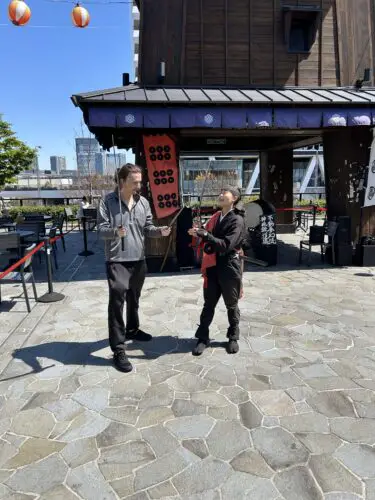
- Check weather and plan accordingly. Having said that, I brought a travel umbrella I never used in the U.K, and so didn’t bring one for Japan. Big mistake! Also, plan on redundancies with wardrobe due to needing to change clothes due to unexpected downpours, mud, or even falls while on hikes or when out and about (ask me how I know this! LOL).
- Make sure you have a currency converter app on your phone. My travel company had one handy as part of our daily trip alerts, but if not, download one you like and familiarize yourself with conversion amounts before you go. Otherwise, you might be shocked when you hear how many yen something is before associating the value to U.S. rates.
- Make sure you know the addresses of each hotel you will be staying at. Screenshot the address, take a business card from the front desk, or even take a photo of what it looks like from the exterior to help you navigate your way back to your accommodations. Double check the “District” or area where you will be staying to make sure you are at the right location of where your reservation is at(some hotels are in multiple locations).
- Download any apps ahead of time that you think you may need ahead of time (i.e., rideshare and pickup). Many require that you register information in advance, and go ahead and do it while you have time, so you don’t spend needless time stressing over it when you need it the most.
- Be comfortable with taxis and how to secure them.
- Check reviews on the country’s customs processes and accept that you may have a wait to get cleared after landing. The security line for clearing customs at the Tokyo airport was one of the most stressful parts of my entire trip, as the room was filled with inpatient people and the lines were long and processes unfamiliar. But stay calm, and you’ll get through it.
- Keep copies of all your travel documents and passport information with you and provide copies to your designated emergency contact … just in case.
- When in countries with language barriers, communicate using non-verbal skills such as showing the driver the address you need to go to on the phone. While translation apps can be helpful, they are far from perfect, and showing a specific address on Google helped me to get where I needed to go in many situations.
- Familiarize yourself with public transportation, if planning to use. Figure out which stop you need to get on and off, especially when it is in another language. I did quite well in London, but didn’t fare as well in Japan due to a more extreme verbal and written language difference.
- Don’t create extremely tight schedules. Instead, allow yourself some breathing room to figure out a new place, especially when you just land. Give yourself some lead time, if possible When returning home, I had a layover in L.A. before boarding my final flight home to Texas. Due to the plane arriving late from Osaka, I literally had to get through customs, re-enter airport security domestically, and then race to the gate. I made it, but with only about 10 minutes to spare. Talk about stress!
- Be aware of TSA restrictions. I forgot about the liquids restricts, and purchased a small bottle of specialty soy sauce I had planned to share with my family. However, the bottle was too big, and they sadly disposed of it right in front of me (super sad face). The same goes for souvenirs. One of my travel mates had purchased a small umbrella with the handle fastened to resemble a Japanese sword. Even though it wasn’t sharp, they didn’t allow him to board the plane with it, and he also had to leave it behind.
- Above all, cherish the adventure, missteps and all. You may never go to the same country again, and even if you do, the experiences will be different. Enjoy every single moment!
So, what’s next for me? After three big trips in three years, I’m going to focus on my short-term plans of moving into an apartment, working, and saving money. And, when the travel adventurer bug hits again (and I’m sure it will be sooner than later), I’m thinking somewhere beachy and warm … Greece, perhaps?
(NOTE: For families traveling, I recommend taking a look at Awayster’s Free 38-Page Travel Guide that offers tips on having successful outings involving children. The guide includes ways to avoid disastrous trips and to instead avoid meltdown moments and unlock travel confidence. It also includes information on things you should know before you go on an adventure. Check it out!)
Autism in Adults: Living, Learning, and Overcoming Challenges for a Fulfilled Life
Autism in adults requires understanding, and sometimes additional support and coping skills, to achieve independence in today’s world. Learn more about ways adults can live fulfilled lives and the challenges they face.
- 14 Practical Ways for Staying Motivated to Unlock Full Potential
- Dangers of Social Media Addiction: How To Leave the Screens And Face the Real World
- Conquering Low Self-Esteem: How to Overcome Adversity, Self-Criticism
- 8 Heartfelt Ways Autism Emotional Support Animals Transform Lives
- Autism in the Future: Optimism for Improved Perception and Embracement
- Autism and AI: 7 Discoveries About the Surprise Pairing and Profound Impact
- Self-Identity: The Ultimate Guide to Finding Your True Self
- Are You An Adult With Autism? Here Are 6 Signs
- Autism vs Asperger’s Syndrome: What You Need to Know
- Autism Disclosure: Is Revealing Your Disorder Helpful or Hurtful?
- Work and Autism: What Employers Should Know About Hiring People Like Me